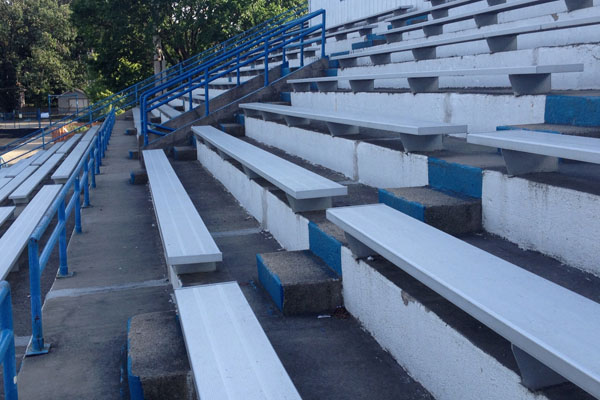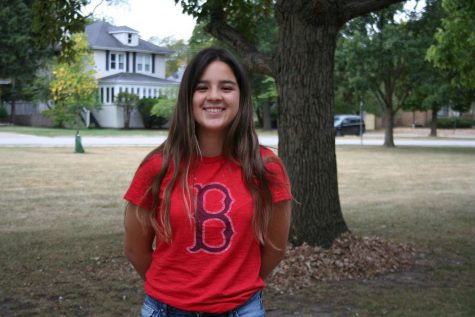$9 million dollar grant likely for life safety

Untouched during the 2006 building renovation, RB’s athletics bleachers could get an upgrade out of the nearly $9 million dollar grant RB will be receiving from the state of Illinois.
September 7, 2013
Recently, the state of Illinois released a grant of almost nine million dollars to Riverside Brookfield High School. RB’s school board applied for the grant back in 2002, anticipating construction needs, and it has finally come through. While another local school, elementary school Brook Park, did not receive money with this release, RB, which was number three on the list, did. Cases varied between each school and grant money was doled out on a priority list.
According to Superintendent Kevin Skinkis, the state released grant money to help schools with renovations and additions and to help create new job opportunities. When the former school board applied for the grant in 2002, they did not know that the school would undergo a $65 million dollar renovation a few years later but they knew that some renovation would be necessary. Then, all grant money was put on hold due to problems in the state’s budget. The school board eventually financed the renovation through a referendum.
Still, the money will come in extremely handy even with the delay. “Now, having the grant in 2013,” Skinkis said, “we can focus on areas of the school that remained untouched when the renovations were done.”
Skinkis noted that a majority of the money could go towards capital improvements. This includes this like new fences around the athletic complex, more security, and improvements to the overall safety of students using the athletic complex. Grant dollars could fund new home and visitor bleachers, new tennis courts, additional parking, new locker rooms, and new roofs on some sections of the building that are still in need of repair.
Non-capital improvements that could be made would be reducing fees on sports, bringing back eliminated classes and clubs, and reducing class sizes. It is even possible that the board could use grant money pay down bonds that are still on RB’s debt service bill or even send some money back to tax payers.
“There may even be a tax break for the community by March for tax season,” Skinkis said.
However, none of the final decisions are up to Skinkis. The school board will have the final say in how and when RB spends its money. They will have to take into account life safety needs that were not addressed in the 2006 renovation. Still, recent life safety assessments were favorable, so those improvements might not use all of the grant money.
Also looming over any decision about how grant money will be spent is the issue of contract negotations. No one knows if any of the grant money will go towards teachers contracts or how the grant might influence the ongoing negotiations.
Skinkis believes the school will not receive the money for 60 to 75 days. The board needs to produce paperwork showing how all the previous work was completed and financed as well as contracts with architects and contractors. After that work is completed, the school could receive its money in 30 to 60 days. Then the school board would begin discussing life safety issues and capital improvement ideas with the community. It could take six to twelve months before any actual work begins on the building.
Still, Skinkis believes the grant is great news for RB.
“It is not a long term solution [to RB’s finances],” Skinkis said, “but it helps.”


